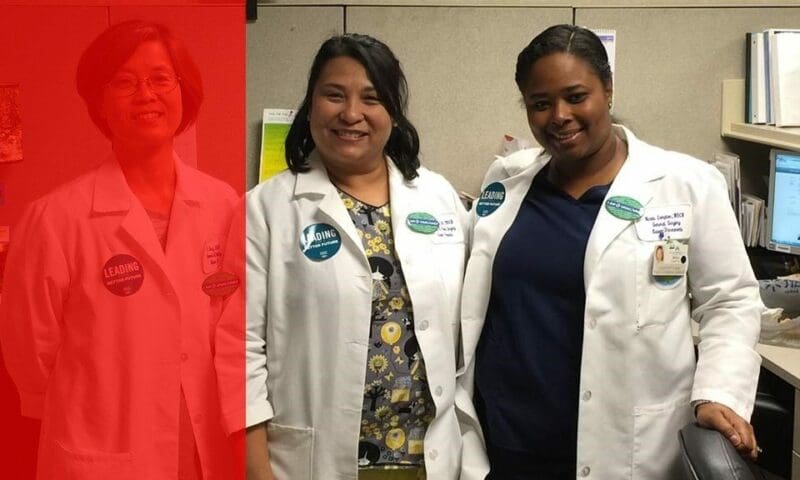

The day after undergoing complicated surgery for pancreatic cancer, a friend’s 76-year-old-husband became combative and aggressive while being cared for in an Intensive Care Unit. He stood up, tore out his IV and nasal gastric tubes, and pushed the nurse who had come to get him to lie down. Eventually he had to be tied down to his bed with hand and foot restraints because he was kicking and thrashing about – even kicking his wife in the stomach. Not the type of scene we expect in an ICU.
For nurses these days, however, it seems that assaults and acts of violence have become part of the job. According to Christy McConville of the United Nurses Associations of California, workplace assaults are now being captured on video and shared on social media, creating a new awareness of the problem.The federal Bureau of Labor Statistics reports that violence against hospital workers is nearly five times greater than against average workers in all other employment categories combined – and it seems to be rising.
» Read more about: Urgent Care: Protecting Nurses Against Workplace Violence »


Maria Bustillos and Elizabeth Fladung discuss their experiences reporting on the pervasiveness of food deserts in the midst of California’s food production heartland.
This podcast is an encore posting from our State of Inequality series.
Maria Bustillos is a journalist and critic living in Los Angeles.
Elizabeth Fladung is a Brooklyn-based, CalArts-trained photojournalist. Her work has appeared in The Nation, La Repubblica, The Fader and Wax Poetics Magazine.
» Read more about: Going Down Highway 99 Feeling Sad (and Hungry) »


The power of art to effect fundamental social change will be on display in Los Angeles this week as a major 10-day “pop-up” exhibit of visual art and accompanying performances, and workshops opens Friday at a former movie theater in the city’s Baldwin Hills neighborhood.
Called Manifest: Justice, the event will showcase over 250 works from more than 150 artists, along with 30 community events that focus on race and criminal justice reform, inequality, healthy communities and immigration reform. It is being produced with support from the California Endowment and Amnesty International.
Drawn from across the country, the list of participants includes such marquee artist-activists as the godfather of guerilla poster caricaturists, Robbie Conal, and Obama ‘HOPE’ agit-provocateur Shepard Fairey, as well as a host of up-and-coming street muralists and wheatpaste artists, inducling the likes of Tatyana Fazlalizadeh, Favianna Rodriguez and Jesse Hazelip. Also on hand will be big-league gallerists such as collagist-photographer Lyle Ashton Harris and painter-sculptor Eric Fischl.
» Read more about: 'Manifest: Justice' Art Show Explores Inequality and Reform »


In The Public Interest made a big splash a few years ago with our report that showed many private prison contracts include a “lockup quota,” also known as a bed guarantee, which ensures high levels of taxpayer funds go to corporations even when prison populations decline. When states agree to 80 percent, 90 percent or even 100 percent occupancy guarantees, policymakers are disincentivized from the kind of sentencing reform we desperately need to pass.
But the federal government is currently giving a different kind of guarantee to prison companies, one that not only guarantees profits but doesn’t make us safer. It’s known as the “Immigrant Detention Quota” and it’s helping make GEO Group and the Corrections Corporation of America (CCA) a lot of money. According to a new report from Grassroots Leadership, the two largest private prison companies in the U.S. now run 70 percent of the ICE Detention System and are working hard to expand that share.
» Read more about: Jailhouse Shock: U.S. Fattens Profits of Private Immigrant Prisons »


Maria Bustillos and Elizabeth Fladung share their views about a trip to Palm Springs, land of mountains, casinos and trailer parks.
This podcast is an encore posting from our State of Inequality series.[divider]Maria Bustillos is a journalist and critic living in Los Angeles.
Elizabeth Fladung is a Brooklyn-based, CalArts-trained photojournalist. Her work has appeared in The Nation, La Repubblica, The Fader and Wax Poetics Magazine.


Elizabeth Fladung’s photos of San Francisco in the midst of the tech boom offer a study in contrasts.
This slideshow is an encore posting from our State of Inequality series.[divider]Elizabeth Fladung is a Brooklyn-based, CalArts-trained photojournalist. Her work has appeared in The Nation, La Repubblica, The Fader and Wax Poetics Magazine.


[SlideDeck2 id=44608]
Trailers! Casinos! Sunsets! Photographer Elizabeth Fladung captures a metaphorical Palm Springs.
This slideshow is an encore posting from our State of Inequality series.[divider]
Elizabeth Fladung is a Brooklyn-based, CalArts-trained photojournalist. Her work has appeared in The Nation, La Repubblica, The Fader and Wax Poetics Magazine.
About one thousand Angelenos marched and rallied for a $15 minimum wage near downtown Los Angeles Wednesday. While several protests occurred at fast-food outlets and other locations across the city early in the morning, the main event began shortly before lunchtime, when demonstrators gathered at a McDonald’s located on Figueroa and 28th streets, and then marched to the Tommy Trojan statue on the University of Southern California campus.
Part of a nationwide Tax Day protest, L.A.’s Fight for $15 marchers included Walmart workers, members of California’s In-Home Health Supportive Services and part-time instructors from USC. One university activist named Maria told Capital & Main that she was a first-generation college student from a working class family. She claimed that USC is pitting the needs of students against raising the incomes and working conditions of part-time academic employees.
“Some faculty are not making ends meet —


It’s a crisp, early morning at the Chatsworth Foursquare Church. A small number of people in worn jackets and winter gear is sitting in the parking lot. Several had awoken at 4 a.m. to leave their sleeping spot at the nearby train yards before security guards showed up for their shift.
This is an encore posting from our State of Inequality series.
A few minutes after nine, the pickup truck they’ve been waiting for arrives, towing a mobile shower unit that sports its provider’s name: The San Fernando Valley Rescue Mission. A middle-aged man with a full, silver mustache steps out of the truck and hands out hygiene items to the folks looking for a few minutes of hot shower.
“Eli is usually the guy who runs this unit, but I’m filling in for him today,” says Jim Real.


Beth Fladung’s images of a food desert in the midst of the most productive agricultural land in the country.
This is an encore posting from our State of Inequality series [divider]
Elizabeth Fladung is a Brooklyn-based, CalArts-trained photojournalist. Her work has appeared in The Nation, La Repubblica, The Fader and Wax Poetics Magazine.


There are many student cars parked at and around Sir Francis Drake High School — some of them expensive BMWs, some environmentally correct Priuses. But when Justice Levine attended classes at this Marin County school, she had to walk to Drake, passing rows of expensive San Anselmo homes. That was nearly seven years ago. Then 14, she would wake up in the morning to an empty house and make her own breakfast — her mother had already left for work for the day.
This is an encore posting from our State of Inequality series
Their rented home — one floor of a modest two-story house — was not well-furnished, most of its fixtures were secondhand and it lacked the semblance of interior decorating. Now 21, Levine describes it as a space she and her mother occupied separately for a long time,
» Read more about: In the Midst of Plenty: Food Stamps in Marin County »


Click the right arrow button to go to the next slide.
[SlideDeck2 id=45066]
This is an encore posting from our State of Inequality series
[divider]
Elizabeth Fladung is a Brooklyn-based, CalArts-trained photojournalist. Her work has appeared in The Nation, La Repubblica, The Fader and Wax Poetics Magazine.


Click the right arrow button to go to the next slide.
This is an encore posting from our State of Inequality series
[divider]
(Andy Warner’s comics have appeared in many places, including Slate, Medium, American Public Media, Symbolia, KQED, popsci.com and for the United Nations Refugee and Works Agency.)


(Editor’s Note: This is an encore posting from our State of Inequality series.)
March 1, 2060
Dear Granddaughter,
Just the other day, you asked me two questions that I failed to answer. How did California get into the fix it’s in today? And, a half century ago, when I was writing regularly about our home state, did anyone see this future coming?
I must confess the real reason for my evasion was that your questions reminded me of a document from those days that I couldn’t immediately put my hands on. It took me a week but I finally found it on a very old laptop computer I still hang onto. (I know, I know, I’m a dinosaur!)
This artifact is dated 2010, and it’s a map of sorts — not of a city but of a future.
[vc_row][vc_column][vc_raw_html]JTNDc3R5bGUlM0UuZW1iZWQtY29udGFpbmVyJTIwJTdCJTIwcG9zaXRpb24lM0ElMjByZWxhdGl2ZSUzQiUyMHBhZGRpbmctYm90dG9tJTNBJTIwNTYuMjUlMjUlM0IlMjBoZWlnaHQlM0ElMjAwJTNCJTIwb3ZlcmZsb3clM0ElMjBoaWRkZW4lM0IlMjBtYXgtd2lkdGglM0ElMjAxMDAlMjUlM0IlMjAlN0QlMjAuZW1iZWQtY29udGFpbmVyJTIwaWZyYW1lJTJDJTIwLmVtYmVkLWNvbnRhaW5lciUyMG9iamVjdCUyQyUyMC5lbWJlZC1jb250YWluZXIlMjBlbWJlZCUyMCU3QiUyMHBvc2l0aW9uJTNBJTIwYWJzb2x1dGUlM0IlMjB0b3AlM0ElMjAwJTNCJTIwbGVmdCUzQSUyMDAlM0IlMjB3aWR0aCUzQSUyMDEwMCUyNSUzQiUyMGhlaWdodCUzQSUyMDEwMCUyNSUzQiUyMCU3RCUzQyUyRnN0eWxlJTNFJTNDZGl2JTIwY2xhc3MlM0QlMjdlbWJlZC1jb250YWluZXIlMjclM0UlM0NpZnJhbWUlMjBzcmMlM0QlMjdodHRwcyUzQSUyRiUyRnd3dy55b3V0dWJlLmNvbSUyRmVtYmVkJTJGJTJGSkVvTmFFZlVSQzglMjclMjBmcmFtZWJvcmRlciUzRCUyNzAlMjclMjBhbGxvd2Z1bGxzY3JlZW4lM0UlM0MlMkZpZnJhbWUlM0UlM0MlMkZkaXYlM0U=[/vc_raw_html][/vc_column][/vc_row][vc_row][vc_column][vc_empty_space height=”35px”][/vc_column][/vc_row][vc_row][vc_column][vc_column_text]
Walking on the tiered layers of rebar at the Wilshire Grand Center construction site is a challenge, especially when wearing the heavy shoes required for safety. You have to watch every step, looking down to make sure that each foot is firm and the body balanced before moving forward. The rough edges of the rods are a brown, grey and rust color mix that blends through the 20-foot long steel. You see and feel the ordered coherence of an enduring structure.
There is a sense in which the ability to notice, rather than to merely look, is part of an artist’s skill. In his drawing classes, the 19th century British art critic and writer John Ruskin taught that noticing the environment around you in a more rigorous way was something that could be learned, a way of thoughtfully moving through the world that he believed need not be limited to the “cultured” and “educated.”
Ruskin (he is a featured character in the recent movie Mr.
» Read more about: Sefi Edery: A Portrait of the Artist as a Young Ironworker »
[vc_row][vc_column][vc_column_text]
Do failed policy proposals from public education officials enjoy an afterlife when their creators depart Washington for the private sector? This is no academic question. In fact, the career arcs of two former federal policymakers may well have foreshadowed the life-or-death clash over the accreditation of San Francisco City College (CCSF), one of California’s 112 community colleges. The state is home to about 10 percent of America’s 1,100 two-year colleges.
As San Francisco Superior Court Judge Curtis Karnow’s ruling on the Accrediting Commission for Community and Junior College’s bid to decertify CCSF draws near, the story of Margaret Spellings becomes instructive. Spellings, who was George W. Bush’s second-term Secretary of Education, commissioned a controversial 2006 report called “A Test of Leadership: Charting the Future of U.S. Higher Education.”
The report’s language was very much in tune with the pro-business Bush zeitgeist.


“He’s had some statements that to me sound kind of liberal, has taken me aback, has kind of surprised me,” (Sarah Palin on Pope Francis)
“He acts so holy. He made love to every girl in every city in America and he had AIDS. And when he had those AIDS, I went to my synagogue and I prayed for him. I hoped he could live and be well. I didn’t criticize him. I could have.” (Donald Sterling on Magic Johnson)
“Everybody who wants to steal your guns is funded by the unions. Everybody who wants to raise your taxes is funded by the unions. Everybody who wants to borrow too much money is funded by the unions. Whatever center-right issue you care about, the unions are on the other team.” (Grover Norquist)
“The guy who wins the Oscar for Best Actor has a much higher bar to clear than the woman who wins best actress.” (Writer-producer Aaron Sorkin)
“They abort their young children,
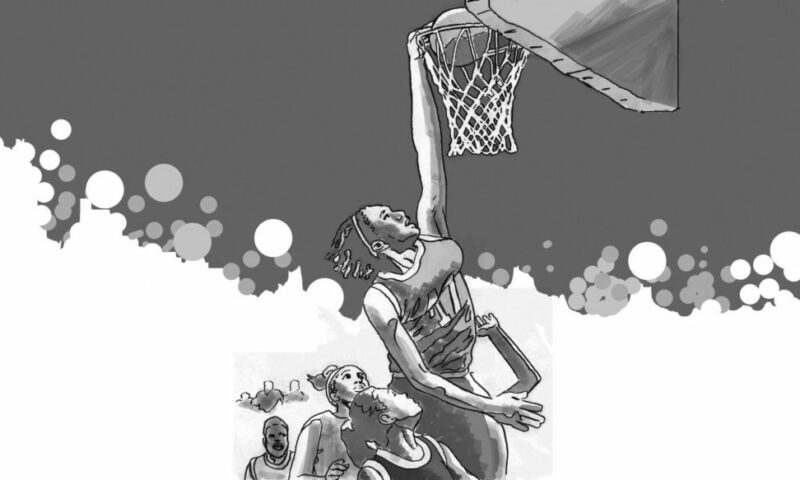

“That can’t be,” Alma Gutierrez said, shaking her head.
“Why not?” Hank Dixon shot back. “It makes money for the university and they get to, you know, what do you call it they do in college … field work, I guess you’d say.”
The two were standing in the laundry room of the Eden Arms. Dixon was installing a new drive belt on one of the dryers. She’d been walking by and he’d called her inside. The handyman continued, “Look, I’m not saying this is for sure, since it comes secondhand.”
“But this man, this gambling friend of your nephew is a lawyer?” The widow Gutierrez didn’t approve of card playing or betting on the horses. Her deceased husband had a gambling habit and more than once had lost the rent money chasing the ponies or doubling down in blackjack.
“Yeah,” Dixon answered while continuing his repair work.
» Read more about: The Dixon Family Chronicles: “Shut Christmas Down!” »
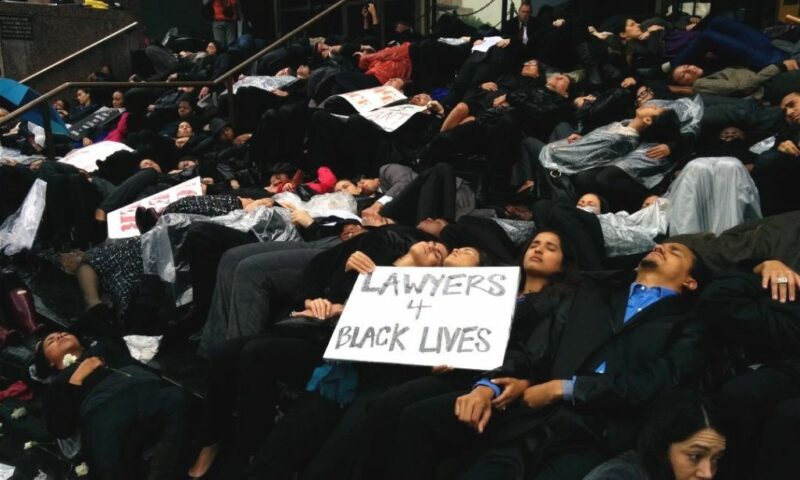
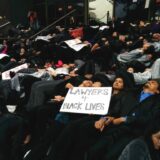
“Racism doesn’t take a break when it rains and neither will we,” Priscilla Ocen, a professor at Loyola Law School, announced over a loudspeaker outside the Stanley Mosk Courthouse in downtown Los Angeles Tuesday. Before her stood a crowd of about 200 people, mostly lawyers and law students, who braved a downpour to protest state violence from South L.A. to New York City, culminating in a four-minute-and-thirty-second “die-in” — representing the four-and-a-half hours that police in Ferguson, Missouri, let Michael Brown’s dead body lie in a street.
“I think it’s a really important thing to stand up to the injustice that we’re seeing around the country,” said Mona Iman, director of Taslimi Foundation, which works to defend human rights in Iran. “This wave of killings of unarmed black men is just so disturbing,” she told me, “and when you feel the frustration and you feel the anger at what’s happening in the world,
» Read more about: Lawyers and Law Students Stage ‘Die-in’ Outside L.A. Courthouse »
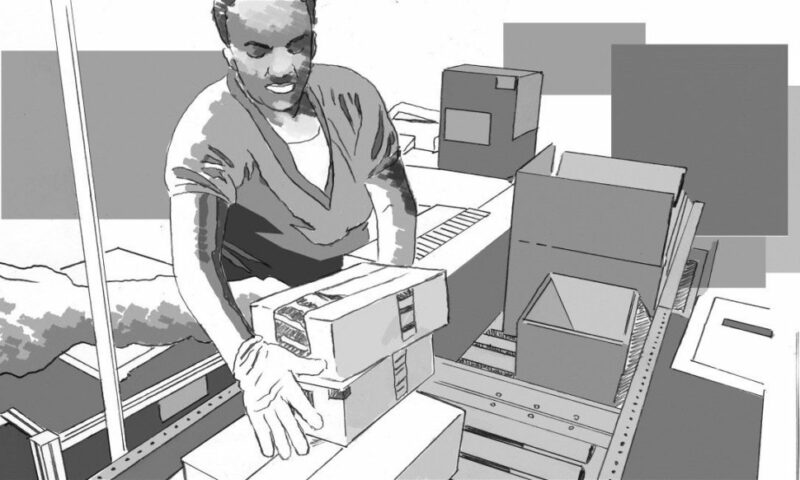

“Ain’t that about nothing,” Macy Farmdale said. “Nine to zip, including the so-called liberals.” She shook her head. “What chance does the working woman have, I ask you.”
Jess Dixon said, “It’s all about keeping the big conveyor belt going, Macy. Us peasants have no choice but to fight and scrabble each day for our rice and beans.”
“Sheeet,” her friend sneered.
The two chuckled mirthlessly. They lamented the recent Supreme Court ruling wherein employees were expected to go through their end of shift security screenings on their own time—no matter if it took five minutes or half an hour.
Farmdale leaned across the lunch table toward the other woman. “This is why we need a union,” she whispered. She leaned back and had more of her chicken salad sandwich.
Jess hunched her shoulders. “That wouldn’t change the ruling. I bet them unions filed, you know,
» Read more about: The Dixon Family Chronicles: “The People United” »